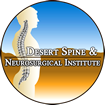What Is The Anterior Approach To Spinal Fusion Surgery For Scoliosis?
There are several approaches to spinal surgery for scoliosis. Each involve fusing – or joining together – the vertebrae in the curve to be corrected. The goal is to both reduce the abnormal curve in the spine and to prevent it from getting worse.
One approach involves accessing the patient’s spinal column from the front of the spine. This is called the anterior approach, and it’s generally used in cases where the curvature is in the mid- to low-back (thoracolumbar) portion of the spine and in instances where the curve is especially severe. This approach also is frequently used for corrective scoliosis surgery in adults, whose curves tend to be more rigid than those in children.
A spinal fusion involves placing bone graft or bone graft substitute in the spaces between each vertebra and fastening instrumentation, such as rods and screws, to the vertebrae to be fused. This instrumentation serves as an “internal cast” to help realign and stabilize the vertebrae while the graft heals and the bones fuse properly.
Why Do I Need This Procedure?
Everyone has spinal curves; a certain degree of curvature is necessary so you can move, walk and balance properly. But in some people, the spine curves too much to one side or the other. This is called scoliosis. In children and adolescents, development of scoliosis is typically “idiopathic,” meaning that it has no known cause.
If the condition is severe, the spinal curves are usually visible – the body no longer looks symmetrical, or balanced. It may also be painful, and the condition could eventually contribute to other health problems.
If your doctor considers your curve to be mild, based on the results of a physical exam and other diagnostic tests such as x-rays, a Computed Tomography (CT) scan and/or Magnetic Resonance Imaging (MRI), he or she may prescribe external bracing. However, if there is significant curvature of the spine – typically more than 45 degrees – your doctor could recommend corrective spinal surgery.
How Is An Anterior Spinal Fusion Performed?
For an anterior spinal fusion, you’ll be positioned on the operating table and sedated under general anesthesia. During this procedure, which usually takes several hours, your surgeon will:
- Depending on the location of the curve, make an incision along the side of the body, over the chest wall or abdomen.
- Remove a rib for spinal access and, if necessary for spinal access, deflate a lung and/or temporarily detach the diaphragm (the thin muscular membrane that separates the thoracic and abdominal cavities and also aids breathing).
- Remove disc material from between the vertebra involved in the curve, to increase curve flexibility and provide sufficient surface area for spinal fusion.
- Attach instrumentation to the vertebrae. This involves:
- Establishing “connection points” with screws and other devices.
- Attaching a specially contoured rod to aid in correction and stabilization.
- Insert bone graft or bone graft substitute to promote fusion.
- Complete a final tightening of the instrumentation.
- Close the incision.
Are There Any Advantages To The Anterior Approach?
One of the advantages of an anterior approach to scoliosis surgery in the appropriate curves is that fewer vertebral bodies may need to be fused. This helps preserve motion, because when vertebrae are fused they become “one unit,” so to speak, and inflexible. Removing disc material also may allow for better curve correction and a more favorable physical appearance.
How Long Will It Take Me To Recover?
Your recovery period will vary, depending on your procedure and your body’s ability to heal and firmly fuse the vertebrae together.
Work closely with your doctor to determine the appropriate recovery plan for you.
Will I Need Another Operation To Remove The Instrumentation?
No. The rods, hooks, screws and other devices your surgeon may use to stabilize your spine are typically left in the body, even after your bones are completely fused. In rare instances, infection or other complications may warrant implant removal.
Are There Any Potential Risks Or Complications?
All treatment and outcome results are specific to the individual patient. Results may vary. Complications such as infection, nerve damage, blood loss and bowel and bladder problems are some of the potential risks of spinal surgery. Additional risks associated with scoliosis surgery may include rod or other implant displacement and failure of the vertebrae to fuse.
Please consult your physician for a complete list of indications, warnings, precautions, adverse effects, clinical results and other important medical information that pertains to scoliosis surgery.
